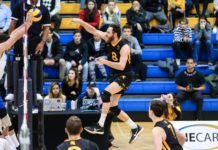<strong>British Columbia lawyers revoke accreditation of Christian Law School</strong>
According to <em>Canadian Press</em>, members of the Law Society of British Columbia have voted against accrediting a Christian university’s law school, Trinity Western University (TWU).
The referendum was called at the end of September by the society’s governors, known as benchers, and was sparked by a community covenant at TWU located in Langley, south of Vancouver.
One of the main protests against the university was that covenant prohibits students and staff from sex outside of a marriage between a man and a woman.
Barbara Findlay, a self-described “lesbian lawyer,”declared in a news release that it was a “proud day to be a lawyer.”
Former Trinity Western student Jill Bishop, who is now a law student, said she was proud that her colleagues stood up for equality. “The experience of being educated at TWU was very oppressive to me as a lesbian who had to sign the restrictive covenant,” Bishop told to the <em>Canadian Press.</em>
The law society said 8,039 of 13,530 eligible voters cast their ballots, with 5,951 voting against accrediting the university and 2,088 voting in favour.
But Trinity Western spokesman Guy Saffold said in a news release that he was disappointed by the vote.“Trinity Western believes in diversity and the rights of all Canadians to their personal beliefs and values. A person’s ability to study and practise the law should not be restricted by their faith,” he said.
<strong>McMaster spinoff aims to become the next Ebay for lab equipment</strong>
Brandon Aubie, a PhD alumni from McMaster University joined the university’s Biointerfaces Institute, which opened in 2013 with $22 million in funding from the Canada Foundation for Innovation, the provincial government, and industry partners, says <em>The Globe and Mail</em>.
Aubie said that after going into the new lab he found that very few people were actually taking advantage of the equipment that was available to them. “We had tons and tons of really cool equipment that we figured everybody would want to use,” he recalls. “But we had a lot of trouble getting people to come in to our facility to use it.” Aubie said.
As a solution, Aubie and some colleagues created a website that listed all the equipment – fluorescence microscopes, spectrometers, centrifuges, and so on – and who to contact if an outside researcher wished to use it. Websites like these one, already exist in the United Kingdom and the United States but are unavailable in Canada.
Aubie, along with John Brennan and Fred Capretta, directors of the Biointerfaces Institute, founded a spin-off company this summer called QReserve, with Aubie as the company CEO.
The QReserve platform works essentially as a search engine for research equipment. Researchers or their graduate students can use the online platform to list their equipment and where they’re located. Then, other researchers searching for equipment can contact that laboratory to inquire about using it or collaborating.
<strong>Art project gets students thinking about violence against aboriginal women</strong>
An ongoing art project on Canadian campuses since 2011 was featured this fall at the University of Saskatchewan. The name of the art project is titled the REDress project.
The project consists of dozens of red dresses hung loosely from railings, windows and ceilings in campus buildings, and swayed in trees around the campus green known as the Bowl. The dresses served as an ominous reminder of Canada’s missing and murdered Aboriginal women.
Métis artist Jaime Black has toured REDress around university campuses and galleries in Canada and abroad since 2011. “I’ve always thought red was a really sacred colour. It’s the colour of lifeblood, and it’s also conversely the colour of blood spilled,” Black said to the <em>StarPhoenix </em>newspaper in Saskatoon.
Nearly 1,200 aboriginal women were murdered or went missing in Canada from 1980 to 2012, according to a 2014 RCMP report. The project aims to shed light on the lack of investigation or convictions when it comes to the disappearance of aboriginal women, and Black hopes her exhibition can shift that so the authorities change their efforts.































